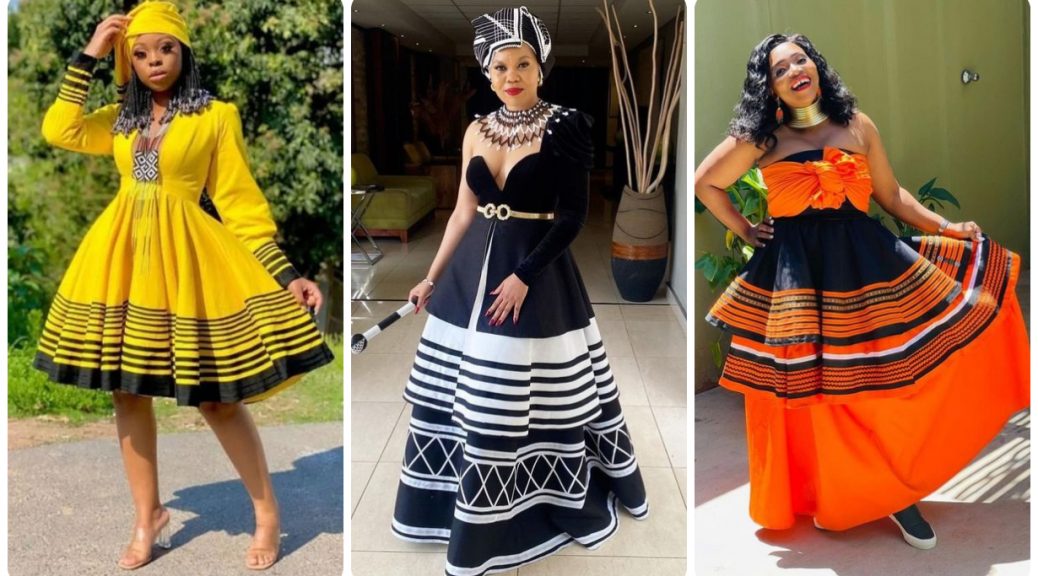The Significance of Colors in Xhosa Attire

Introduction to Xhosa Attire and Color Symbolism
The cultural significance of colors in Xhosa attire
In Xhosa culture, colors play a significant role in conveying meanings and symbolism. Each color used in Xhosa attire carries cultural significance and can represent various aspects such as spirituality, social status, or emotions.
These colors are carefully chosen to reflect the wearer’s identity and convey messages to others within the community.
Traditional Xhosa garments and their use of colors


Traditional Xhosa garments, such as the iconic Xhosa beadwork and textiles, are rich in vibrant colors. Bold and bright hues like red, blue, yellow, and green are commonly used in clothing, blankets, and accessories.
The combinations of these colors are not random but hold specific meanings and are often chosen based on the occasion or individual preferences.
Colors in Xhosa attire are more than just visual aesthetics; they are a language that communicates the wearer’s heritage and cultural belonging.
White in Xhosa Attire


Meaning and symbolism of white in Xhosa culture
White in Xhosa attire symbolizes purity, spirituality, and a connection to ancestral spirits. It represents the harmony between the living and the departed, bringing a sense of peace and protection. White is also associated with new beginnings, cleansing rituals, and the journey towards enlightenment in Xhosa culture.
White garments in Xhosa traditional ceremonies
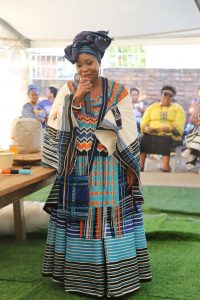
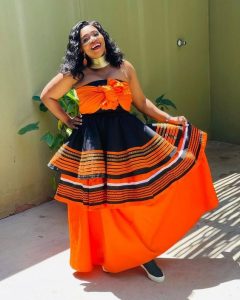

White garments are often worn during significant Xhosa ceremonies like weddings, as a symbol of the couple’s purity, unity, and blessings from their ancestors. These garments embody cultural traditions and serve as a visual representation of the spiritual significance attached to the ceremony.
Red in Xhosa Attire
Symbolism and cultural relevance of red in Xhosa attire


Red holds deep cultural significance in Xhosa attire, symbolizing strength, passion, and vitality. It is associated with blood, life force, and courage in facing challenges. Red in Xhosa culture represents energy, power, and resilience, reflecting the vibrancy and determination of the community. It also signifies love, vitality, and a connection to the earth and spiritual realms.
Red beads and fabrics in Xhosa clothing
Red beads and fabrics play a crucial role in Xhosa clothing, embellishing traditional garments with intricate patterns and designs. These vibrant red elements enhance the aesthetic appeal of attire worn during rituals, ceremonies, and celebrations, adding richness and cultural depth to the ensemble.
Black in Xhosa Attire
Significance of black in Xhosa traditional wear

Black holds cultural importance in Xhosa attire, symbolizing power, dignity, and unity within the community.
It represents strength, resilience, and the connection to ancestors and traditions.
Black in Xhosa clothing signifies respect for rituals and ceremonies, reflecting a deep spiritual and historical reverence.
The color black in Xhosa traditional wear embodies elegance, wisdom, and a sense of collective identity passed down through generations.
Black accessories and their importance in Xhosa culture


Black accessories such as belts, headbands, and necklaces complement Xhosa attire, adding sophistication and meaning to ceremonial and everyday wear.
These accessories symbolize protection, status, and cultural heritage.
They often feature intricate beadwork and patterns that showcase craftsmanship and artistry unique to Xhosa culture.
Black accessories not only enhance the visual appeal of the outfit but also serve as symbols of pride, belonging, and the preservation of cultural practices.
Blue in Xhosa Attire

Use of blue in Xhosa clothing and its symbolism
Blue plays a significant role in Xhosa traditional wear, symbolizing tranquility, spirituality, and harmony. It represents peace, loyalty, and a deep connection to nature and the divine. In Xhosa culture, blue garments reflect a sense of calmness and stability, embodying inner strength and wisdom.
The color blue in Xhosa attire conveys a sense of peace and serenity, highlighting the importance of balance and mindfulness in everyday life.
Ceremonial importance of blue garments in Xhosa attire

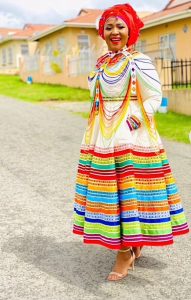
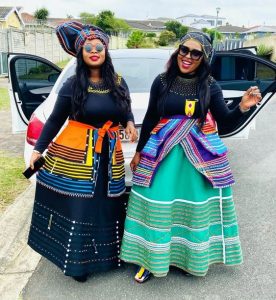

Blue garments hold ceremonial importance in Xhosa culture, often worn during significant rituals and celebrations.
They signify unity, purity, and reverence for cultural traditions. Blue attire is commonly associated with ceremonies that mark important life events or spiritual milestones, symbolizing growth, renewal, and blessings. The ceremonial use of blue garments in Xhosa attire underscores the community’s shared values, beliefs, and interconnectedness, fostering a sense of belonging and spiritual harmony.
The Significance of Colors in Xhosa Attire
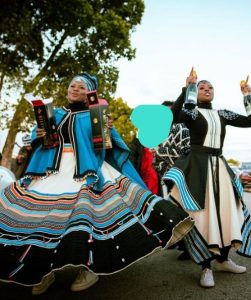






Colors in Xhosa Attire

